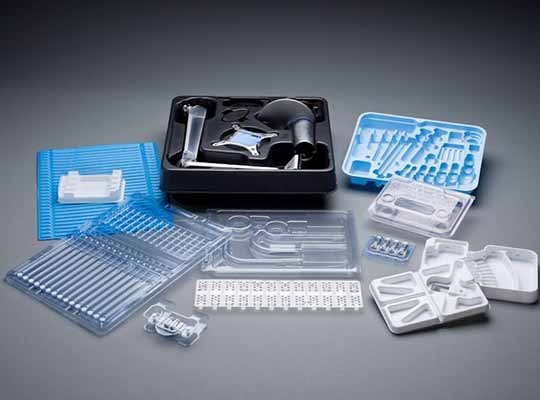The global electronics components market reached nearly 3.9 billion pounds in 2016. This market is estimated to reach nearly 6.1 billion pounds in 2022 from 4.2 billion pounds in 2017 at a compound annual growth rate (CAGR) of 7.7% for 2017-2022.
Report Scope:
This study covers all electronics components where plastics are used to a significant extent. It concentrates on components produced by injection molding, compression molding and encapsulation. It does not cover wire and cable, films used in capacitors or recording media, or enclosures.
The study also identifies major material suppliers and key processors. It reviews important new technologies, as well as changes in legislation and industry standards and norms that may have significant effects on markets for electronics components, and it looks at interpolymer competition.
Report Includes:
- An overview of the global market for plastics in electronic components
- Analyses of global market trends, with data from 2016, estimates for 2017, and projections of compound annual growth rates (CAGRs) through 2022
- Information about pricing of resins, molders of electronic components, testing agencies, and requirements related to electronic components
- Coverage of single devices, such as connectors, capacitors, switches, bobbins, multiple-component devices such as printed circuit boards and interconnects, and encapsulants.
- Comprehensive company profiles of major players in the industry
Summary
The electronics industry is a major user of high performance thermoplastic and thermosetting polymers. Almost every type of engineering thermoplastic (ETP) is used in one type of electronics component or another, although standard nylons (polyamides) and thermoplastic polyesters (generally polybutylene terephthalate) are by far the two dominant polymer families – especially among connectors, which account for the lion’s share of total business in electronics components. As the use of electronics devices extends into more aspects of our working lives and leisure activities, so the consumption of engineering thermoplastics in this sector continues to grow, even as the average size of each individual component used continues to decrease, and improvements in polymer processability and end-use performance allow wall thicknesses to be reduced.
In many cases, and especially in certain types of connector, ETPs are treated by specifiers as commodities, and the choice of material is governed probably just as much by price as it is by performance. In higher-performance applications, this is much less so the case, although even here suppliers of high-temperature nylons (a group that includes polyphthalamides, nylons 46, 4T and others) are battling it out with suppliers of liquid crystal polymers (LCPs, which are particular forms of thermoplastic polyesters), polyphenylene sulfide (PPS) and other polymer types. Still further up the performance ladder are various types of polyaryletherketone, the most common of which is polyetheretherketone.
Polyimides have something of a niche in the electronics components market. Available in thermoset and thermoplastic form, they are used mostly in film form for flexible electronics. Here, they face some competition from films in different types of polyester (polyethylene terephthalate and, to a lesser extent, polyethylene naphthalate) when thermal stability is not an issue. This is a submarket that is currently in a rapid state of development.
Within the family of thermosetting resins, it is epoxy resins that dominate, because of their exclusive use in rigid printed circuit boards (PCBs) and also in encapsulation. All other major thermosets: polyurethanes, phenolics, unsaturated polyesters, diallyl phthalates are used to a much lesser degree, virtually exclusively for encapsulation of sensitive electronics. Trends in their consumption are either in line with gross domestic product (GDP) or below it, as their place is taken by ETPs.
Make an enquiry before buying: https://www.trendsmarketresearch.com/checkout/12264/Single















